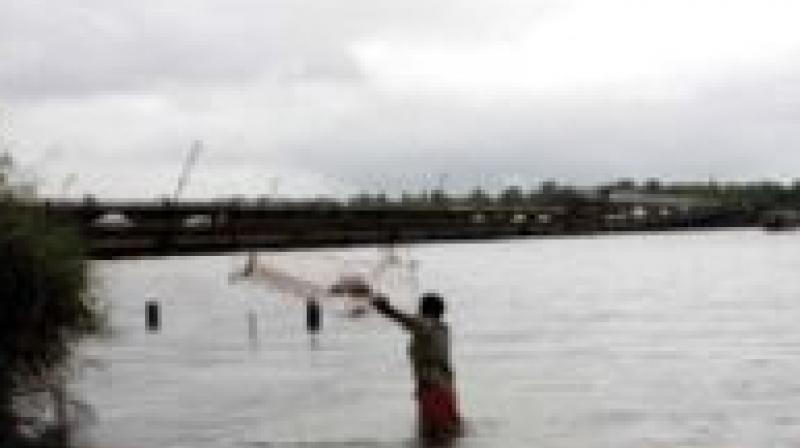Thanneermukkam bund fails to control saline intrusion
Experts worry that crops may get destroyed if the salinity level is more than 2 PPT.

KOTTAYAM: The saline water intrusion into the Vembanad lake from the sea has increased posing a threat to the paddy crops of Kuttanad. The Thanneermukkam bund constructed in 1975 and the 'Orumuttus' (earthen bunds) have failed to protect the crops from salinity. The salinity level has increased in the outer portion of Vembanad lake, including the northern side at Vaikom, pointing to the disastrous effect of climate change. The crop may get destroyed if the salinity level is more than 2 PPT (a measurement to detect the presence of salt in one kilogram of water).
The salinity has been going up at the Vaikom boat jetty area over the past years. It was .9 PPT per 1,000 in January 1988, 9.2 in 2000, 14.11 in 2013 and 22. 72 in February this year. The salinity in the paddy cultivated region of Punnamada in Kuttanad has increased from .6 PPT in 2011 to 6.7 in January 2018. It was .6 PPT in 2011 in Punnamada lake and Pallathuruthy, close to the main areas of rice farming in Kuttanad. However, the level declined to 3 PPT in February this year in the Punnamada region where rice cultivation is taking place. This is the result of rainfall and the inflow of river water.
"The high salinity content in the lake water even outside the Thanneermukkam bund points to the effect of climate change in the Kuttanad eco-system. The only way out is time-bound paddy cultivation on the basis of a crop calendar," Dr K.G. Padmakumar, director of the below sea-level farming institute at Kuttanad, told DC. He said that by the beginning of March, the salinity level had come down to less than 2 PPT owing to the inflow from the river.

